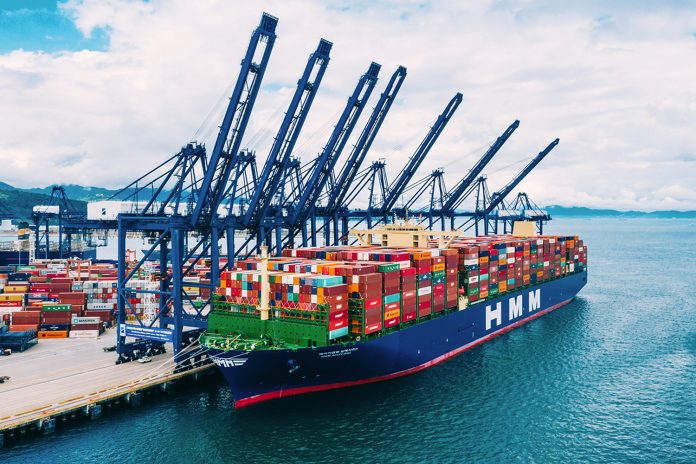HMM’s hopes of restoring profitability have been dashed by the Covid-19 pandemic, despite efforts and capacity and rate discipline.
The South Korean liner operator reported a net loss of KRW65.6 billion (US$53.64 million) on revenue of KRW1.31 trillion (US$107.11 billion), although its bottom line was improved from the KRW178.46 billion (US$157.1 million) loss on revenue of KRW1.32 trillion (US$1.16 billion) in Q1 2019.
Container shipping accounts for nearly 90% of HMM’s revenue, and HMM transported 890,000TEU during Q1 2020, down from 1.09 million TEU in Q1 2019.
The segment contributed KRW1.11 trillion (US$907.6 million) to the company’s income for Q1 2020, down from KRW1.17 trillion (US$1.03 billion) in Q1 2019. The operating loss from the container shipping unit was KRW25.94 billion (US$21.21 million), compared with a loss of KRW95.75 billion (US$84.29 million) in Q1 2019.
HMM said, “In the first quarter of 2020, the market softened because of the early Lunar New Year holiday, followed by the Covid-19 outbreak, but freight rates stabilised due to the aggressive efforts by liner operators to match supply with volume.”
By the end of the first quarter, Covid-19 was spreading all over the world, causing uncertainty and in response, many liner operators have cut Asia-Europe sailings. Transpacific cargo volumes suffered from sluggish demand due to weak exports from China and, as a result, volumes from the Americas decreased by 7.7% and the volume from China decreased by 21.2% on last year’s figures.
“We expect the effects of Covid-19 to be more serious in Q2 2020 and to this end, we will cope by timing our routes and implementing strategic rate policies, while observing market fluctuations,” said HMM.
However, the company’s management admitted that the Covid-19 pandemic has cast a cloud over the market, with mainline operators blanking sailings to adjust capacity.
Martina Li
Asia Correspondent







